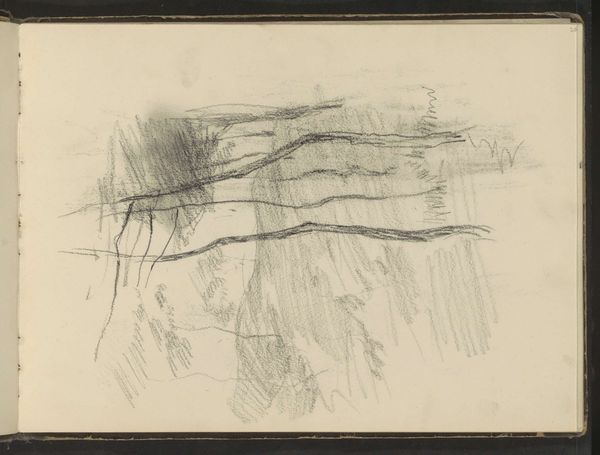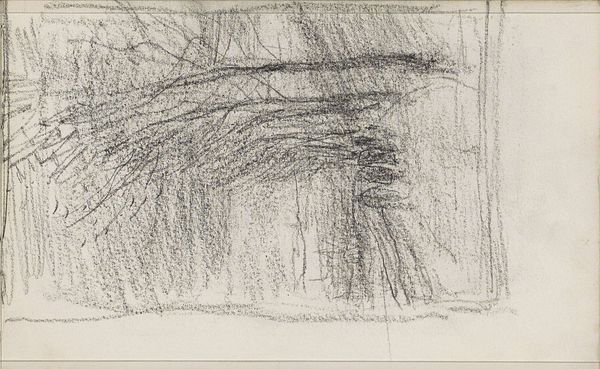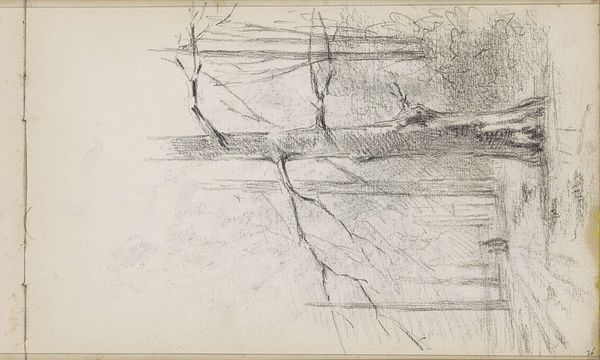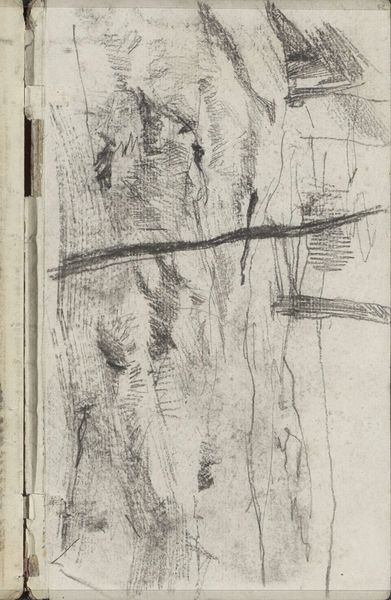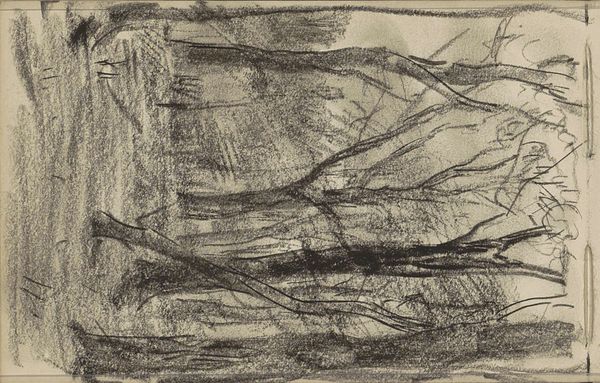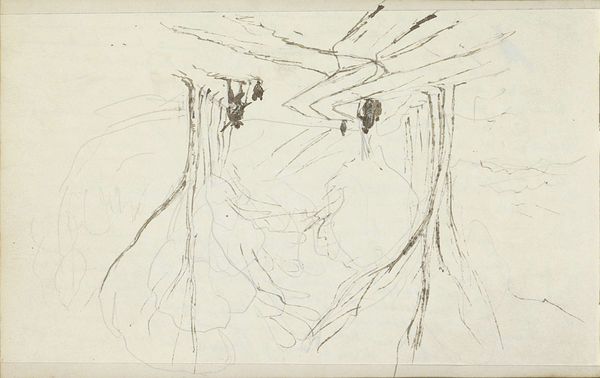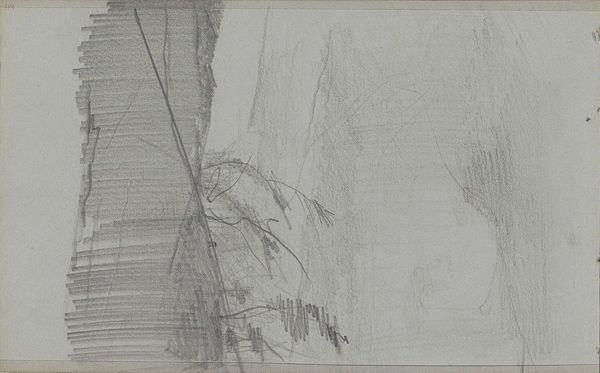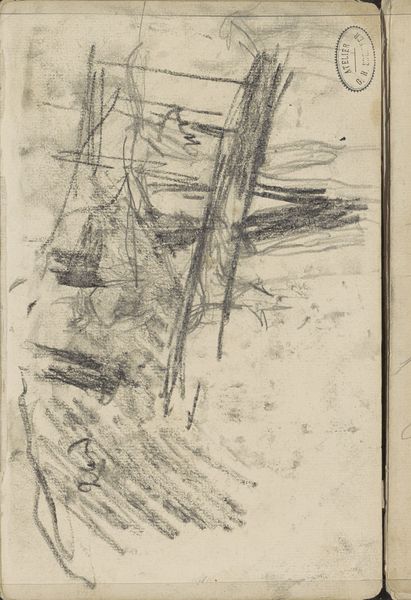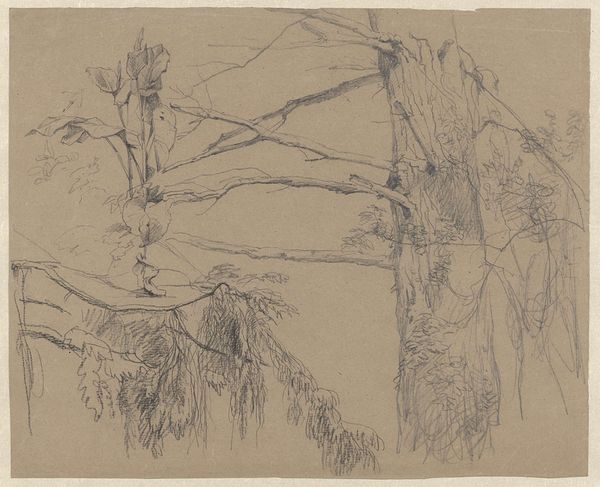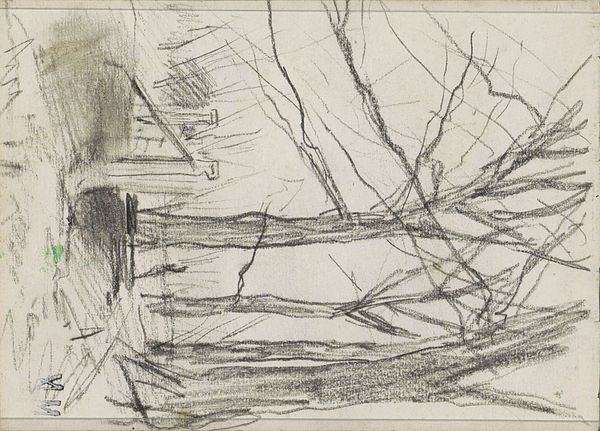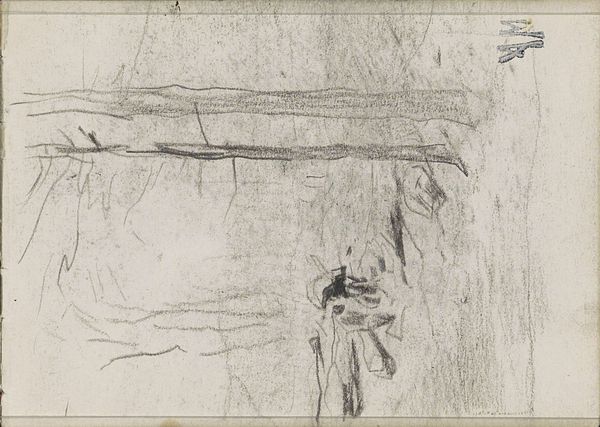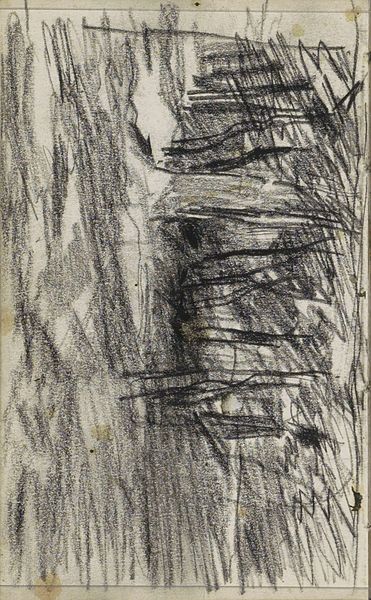
drawing, pencil
#
drawing
#
impressionism
#
pencil sketch
#
landscape
#
pencil
#
watercolor
Copyright: Rijks Museum: Open Domain
Curator: Oh, my, isn't that desolate? It makes me think of late November, that quiet, cold waiting time when you’re pretty sure winter's settled in but spring’s just a hopeless dream. Editor: Indeed. We're looking at Anton Mauve’s “Tree with Bare Branches," dating roughly from 1848 to 1888, held here at the Rijksmuseum. Mauve, of course, was part of the Hague School, and later influenced his cousin-in-law, Vincent van Gogh. And I think those affiliations tell us quite a bit about how a seemingly simple landscape is so much more. Curator: Van Gogh's artistic start really does shine through here, doesn't it? You can practically see that heavy-heartedness, almost feel the wind biting. The rawness is powerful. Just look at the scrawling lines; the trunk practically dissolving into the blank page! It's such a different sensibility compared to those perfectly picturesque landscapes so fashionable at the time. Editor: Absolutely. Remember, landscape art in the 19th century became increasingly tied to national identity and romantic ideals of nature. So an image like this, so stark, almost…vulnerable… stands out. It presents a reality far removed from idealized visions, closer to the difficult existence many faced. Curator: Makes you wonder what he was thinking about that day, right? What was heavy on his mind as he sat there, translating this very stark bit of the world onto paper? Or perhaps he just wanted to feel and convey the deep somber beauty of it all... Editor: It’s a deliberate shift, wouldn't you agree? And also a statement. Think of the rising urbanism, industrialisation… These artists, including Mauve, turn towards the simple, rural, almost as a quiet protest, yet one that also captures a palpable anxiety. Curator: That muted palette—mostly pencil, watercolor touches really heightens the sense of yearning. The sketch almost feels like a visual haiku. A simple poem about a profound feeling... Makes one want to huddle up indoors, brew some strong tea, and watch the storm safely from within, doesn't it? Editor: In a way, that emotional resonance—its enduring accessibility – is precisely why the artwork endures. It quietly, and without pomp, acknowledges the tougher realities alongside the possibility of simple beauty. Curator: Beautifully put. It’s those unspoken connections, that little hint of truth peeking through the lines, isn't it? Art becomes such a valuable experience precisely in these subtle places where emotions are mirrored...
Comments
No comments
Be the first to comment and join the conversation on the ultimate creative platform.
